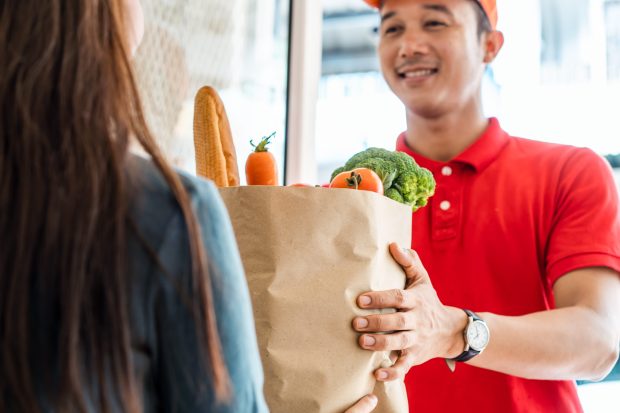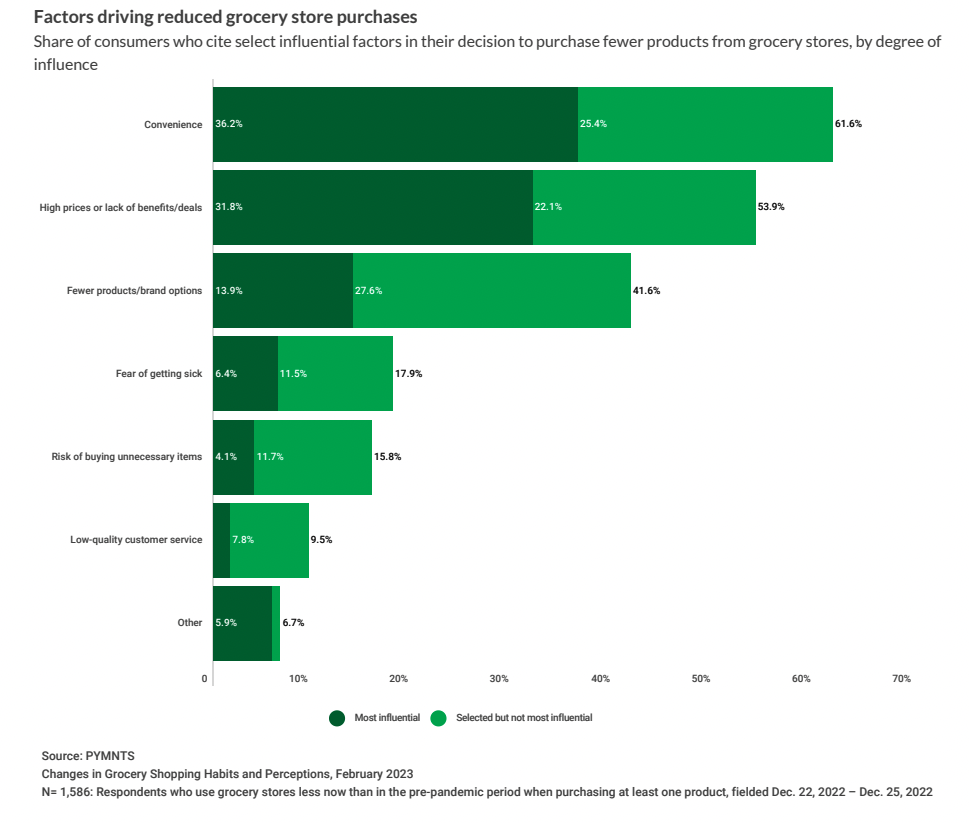Convenience and Better Deals Drive Consumers’ Switch From in-Store Grocery Shopping to Digital

The pandemic has significantly impacted consumer behavior, including grocery shopping habits.
Traditional brick-and-mortar grocery stores are no longer the go-to channel for most shoppers, with an increasing number of consumers opting to purchase groceries online.
According to a PYMNTS Intelligence study on consumer shopping habits and preferences, there has been a decline in the number of shoppers making the majority of their grocery purchases at brick-and-mortar stores. In early 2020, 63% of shoppers made most of their common grocery item purchases in stores, but this figure has dropped to 44%.

A small but rapidly growing segment of consumers now exclusively buys all their groceries online, particularly among the millennial and bridge millennial age groups.
Several factors contribute to the reduced purchases at physical grocery stores. Convenience and the desire to find better deals are the primary drivers for consumers choosing to shop online. Research revealed that 62% of shoppers who buy more groceries through digital channels than in stores cited convenience as a significant factor. Additionally, 54% of consumers mentioned high prices or the lack of benefits and deals as reasons for their switch to digital alternatives.
Different age groups have varying motivations for their grocery shopping preferences. Younger shoppers, such as Generation Z consumers, millennials and bridge millennials, are more likely to prioritize convenience as their primary driver while older consumers, including baby boomers and seniors, are more focused on cost-effectiveness and finding better prices and deals.
Additionally, while most consumers still shop at physical grocery stores, there is a growing trend of hybrid shopping, which involves buying groceries both online and in stores. The shift toward hybrid shopping is becoming the new norm as consumers seek convenience and flexibility in their grocery shopping experience.
Overall, the pandemic has accelerated the shift toward online grocery shopping and hybrid shopping models. To meet the evolving needs of shoppers and thrive in the changing grocery landscape, retailers and grocers must adapt to the digital-first paradigm and provide a seamless and convenient online shopping experience.

